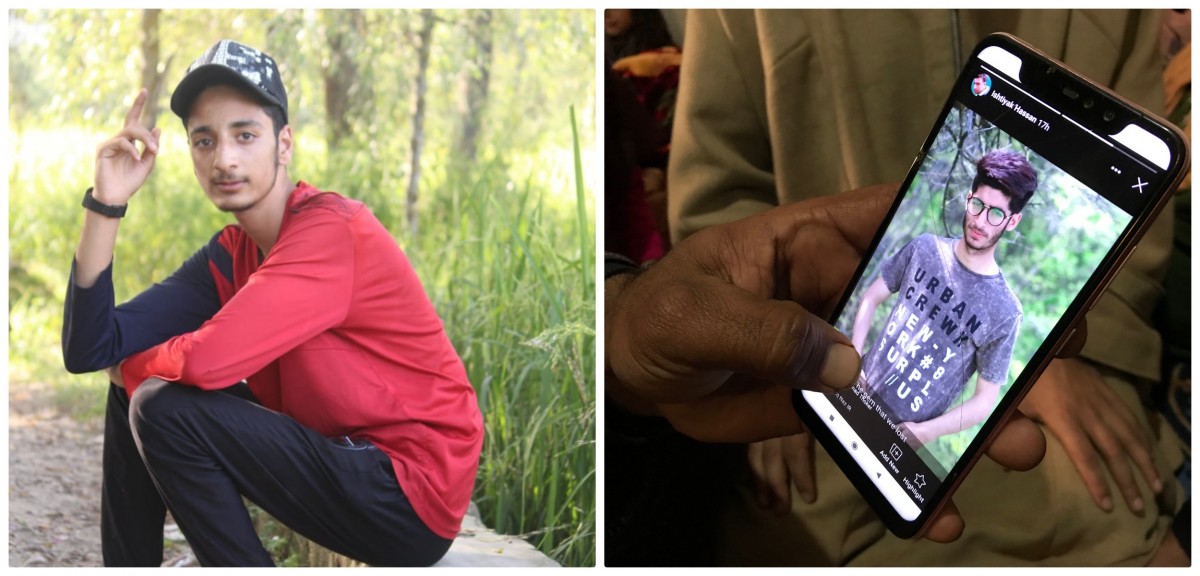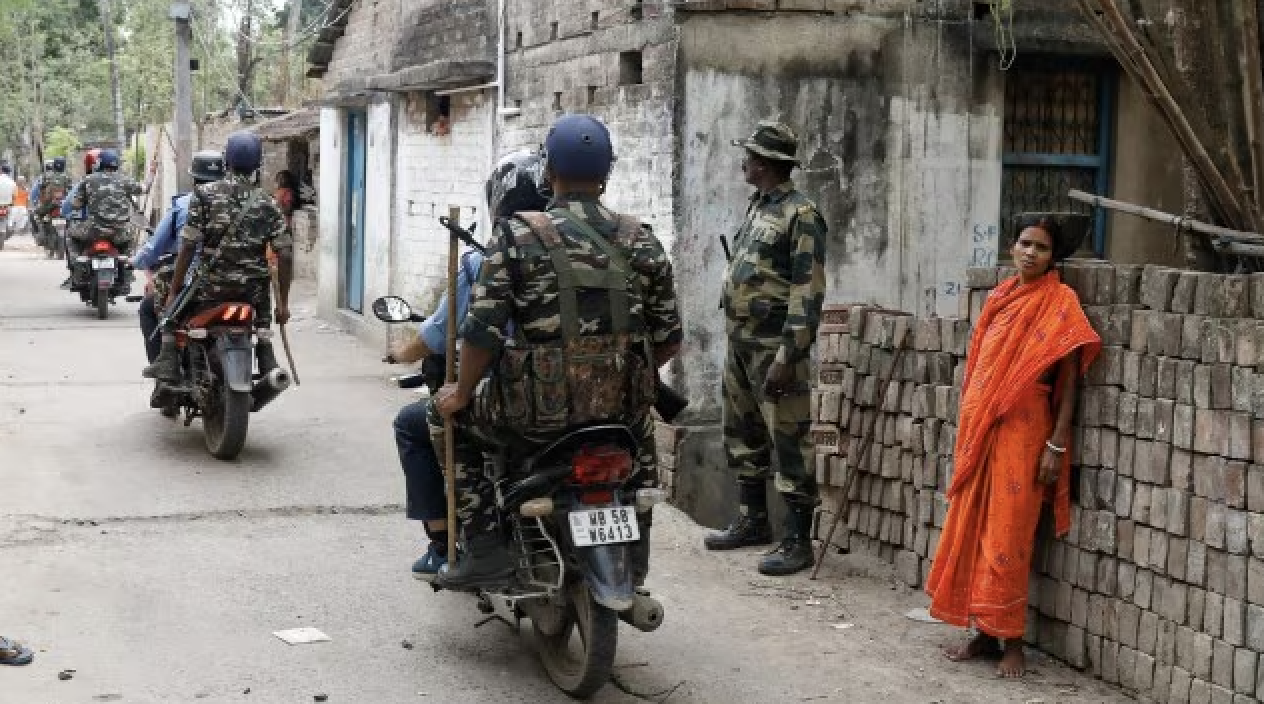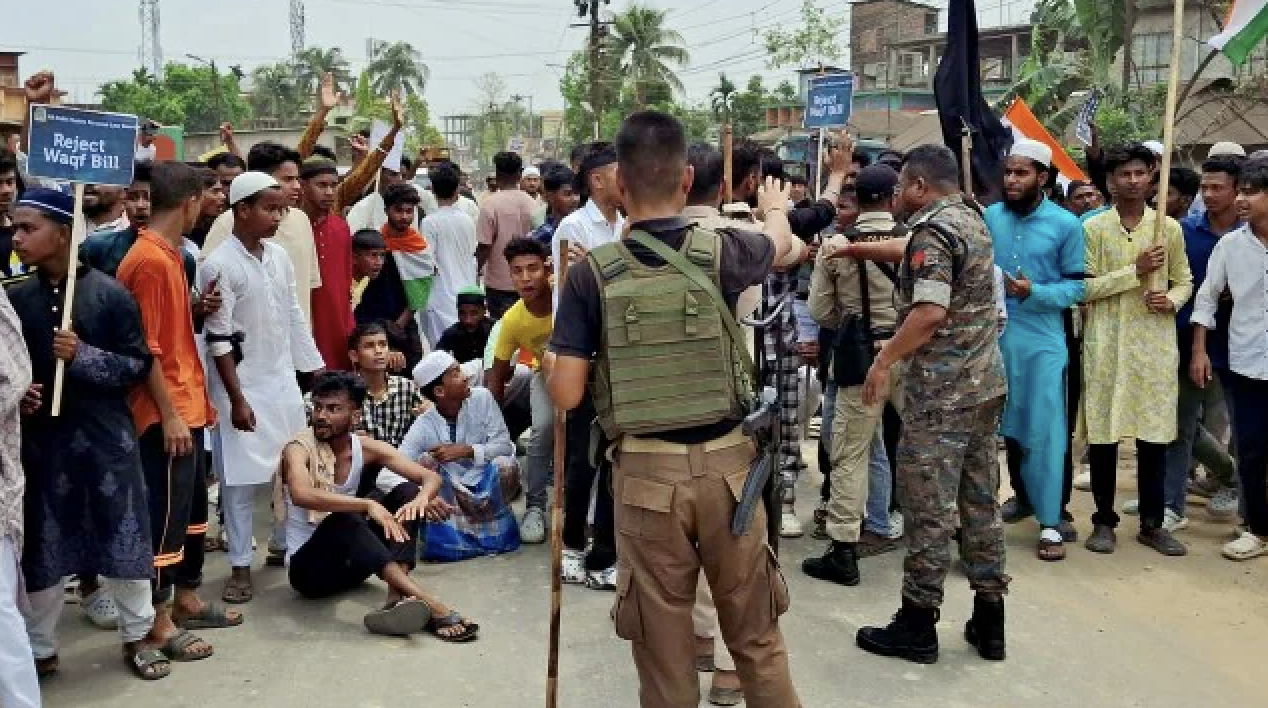
By Shakir Mir
Shopian (Jammu and Kashmir): The last moment Dilshada Ganai (45) remembers spending with Faisal Gulzar, her 14-year-old son, was a morning conversation over tea on April 6. She implored him to walk his two sisters to school, and he had nodded solemnly.
Moments later, Faisal excused himself and left. “I asked him where he was headed. He told me he will be back soon.” He did not return.
The Ganai family lives besides vast apple orchards hemmed in by the snow-covered Pir Panjal mountains in south Kashmir’s Shopian district, which is also where militants frequently clash with the security forces.
Two days after Faisal went missing, a gunfight raged elsewhere in the district. The security forces shot dead at least five militants, including 15-year-old Kashif Mir who hailed from Dadsara in Tral, 44 km from Shopian.
Pictures show Faisal and Kashif as commonplace adolescents, fond of snazzy outfits, sneakers and selfies. In one of his photos, Faisal is wearing a faded grey T-shirt, hands resting on his waist as he stares blithely into the camera. Kashif sports a red summer sweatshirt and black joggers, his face aglow with a modest smile. There’s an air of naivety about them.
Yet, earlier this month, both teenagers became jarring metaphors of Kashmir’s violent conflict and its capacity to cause endless grief. The boys, both minors, were among 12 militants killed during four big gun-battles fought over the past weekend in Kashmir, marking a major escalation of violence in the valley since the scrapping of Article 370 in August 2019.
On April 8, two gunfights took place in Tral and Shopian in south Kashmir. Both encounters ended with the killing of seven militants associated with Ansar Ghazwat-ul Hind, a splinter group that broke away from Hizbul Mujahideen in 2017 in the wake of ideological differences.
AGuH, which proclaims its affiliation with al Qaeda, has drawn its cadres mostly from the Awantipora district where Tral is located. The security forces in Kashmir have lauded the killings as a resounding success. They have nearly wiped out the presence of the AGuH from Kashmir, police said. Kashif was one of the seven militants killed that day.
“We first sent the Maulvi sahab into the mosque twice to convince the militants to surrender,” said Major General Rashim Bali, who heads the army’s ‘Victor Force’ in Kashmir. “Then we sent one of the militant’s brothers twice at night with the same message. In the morning, we also sent his parents into the mosque. But we did not get any response. We made every attempt to make our Kashmiri brothers surrender.”
On April 10, jawans shot dead five militants, including Faisal, during two separate gun-battles in Hadipora, a village in Shopian, and near Semthan in Bijbehara town on south Kashmir
“Despite hectic efforts by security forces and family members, Faisal rejected surrender offers,” a police official told the media.
The four gunfights took place within the span of 72 hours in what’s being seen as the bloodiest week in Kashmir in 2021. The death of two teenagers has also added to the grief in Kashmir and prompted concerns that the involvement of minors as combatants signifies a dangerous turn in the three-decade-old conflict.
At Faisal’s house in Chitragam village, a crewel embroidered cloth was draped at the entrance to welcome visitors.
When asked about Faisal, his family described a taciturn child with a “pious” temperament who swore off “vices” that the young tend to get drawn towards and shouldered the entire burden of his family and looked after their orchard. “We have been taken aback by all this,” said Ishtiyaq Hassan, his cousin. “We are still coming to terms with it.”
Faisal’s mother, Dilshada, appeared lifeless and washed out. She was ushered into the room with the help of two relatives, and seated upon a heap of folded mattresses amid cries from women who were present there.
“He single-handedly took care of our family orchard,” she said. “His father doesn’t know farming. He owns a business.”
On the day Faisal went missing, the family did not grow worried until 4 pm. “We thought he must have been annoyed with us over some issue and that’s why he left,” Hassan said. “It never occurred to us that he had left to join the ranks of militants.”
They called his cellphone but he didn’t answer. Initially, the family feared that Faisal had been picked up by the army. In the morning, they went to the police station to file a missing person’s report. “The police said Faisal did not figure in any case nor were there any previous antecedents about him that would have made him suspect,” the family members said.
His cousins said Faisal showed scant political awareness. “We would sit with him for hours. He never spoke about politics at all,” said one of his cousins in the room.
For four days, his family made exhaustive efforts to trace him, contacting his friends and classmates, looking for him in the orchards and praying. On April 10 at 5:15 pm, Gulzar Ahmad Ganai, Faisal’s father, received a call from him. “He said he was held up in an encounter. He asked for forgiveness,” said his mother.
Dilshada tried to persuade him to surrender but he refused. “This is my objective and I will achieve it,” she recalled Faisal’s last words before he hung up. “Don’t blame my friends for it. I made this decision on my own.”
His parents also reached the encounter site where the police handed them a megaphone. They urged Faisal to drop his weapons and come out. “There was no response,” Dilshada said.
His other family members question the wisdom of allowing the gun-battle to continue. “He is a 14-year-old child. The encounter took place inside a two-room structure. How long would their meagre weapons have lasted? Firing a teargas canister alone would have knocked them over,” said one cousin who did not wish to be named.
They also said that Faisal’s uncle, Shabir Ahmed, had volunteered to go inside the building and bring the boys out. “But no sooner had he walked four steps to the building than he stopped and asked to return,” said one of Faisal’s relatives.
His family members were only shown his body after they drove 126 km all the way to Handwara in north Kashmir, where Faisal was buried as per a new protocol that does not allow for the bodies of militants to be returned to their family members for last rites. Hassan opened his phone to show a video of his young cousin’s charred body.
An ‘impressionable child’
At Dadsara in Tral, Hamid Mir (29), Kashif’s elder brother, is inconsolable. On March 20, Kashif, a Class 11 student, was attending his cousin’s wedding at Nagbal in Tral, some 17 km away. He left the ceremony midway through. Since then, his whereabouts were unknown for the next 18 days, during which his family unsuccessfully tried to locate him, mirroring the same frantic, grief-suffused efforts that Faisal’s family had made.
Then on April 8, his friends alerted Hamid to a WhatsApp message pertaining to a gun-battle in Shopian. “We were already suspecting he might have joined [the militants],” said Hamid. The family rushed to the Police Control Room in Srinagar where, generally, the bodies of dead militants are first assembled for identification and other official procedures. The cop who they had urged to confirm if any of the five slain militants was Kashif, returned with a series of pictures. One of them was Kashif’s bullet-riddled body. Hamid was tearful when he saw the lifeless body of his younger brother. He had a bullet injury on his left thigh. “There was another bullet injury just above the nape of his neck,” he said. “The bullet had entered through his mouth.”
Kashif’s family described him as an impressionable child who was deeply influenced by the events he witnessed since his childhood. He has lost his two elders brothers, who joined the militancy and were killed in 2010 and 2014. He is also the cousin of Burhan Wani, the popular Hizbul Mujahideen commander whose killing sparked the 2016 civil unrest. Last year, Kashif passed his Class 10 examinations with flying colours, scoring 419 marks out of 500.
When a suicide attack struck a CRPF motorcade in 2019 resulting in the killing of 50 personnel, Kashif was summoned by the NIA, his family alleged. “He was held for six days at the Awantipora police station,” Hamid claimed. “He was just 13 years old then. When he returned, he would dwell upon the incident excessively. He would always say he felt mentally tormented after that episode.”
Hamid, a postgraduate in physical education, has himself experienced the travails of routine summoning and detentions. “Over the past three years, I must have been detained around 30 times,” he estimates. “Kashif grew up precisely in this milieu –a life pervaded with violence, intimidation and grief. I believe that provoked him to take this step.”






